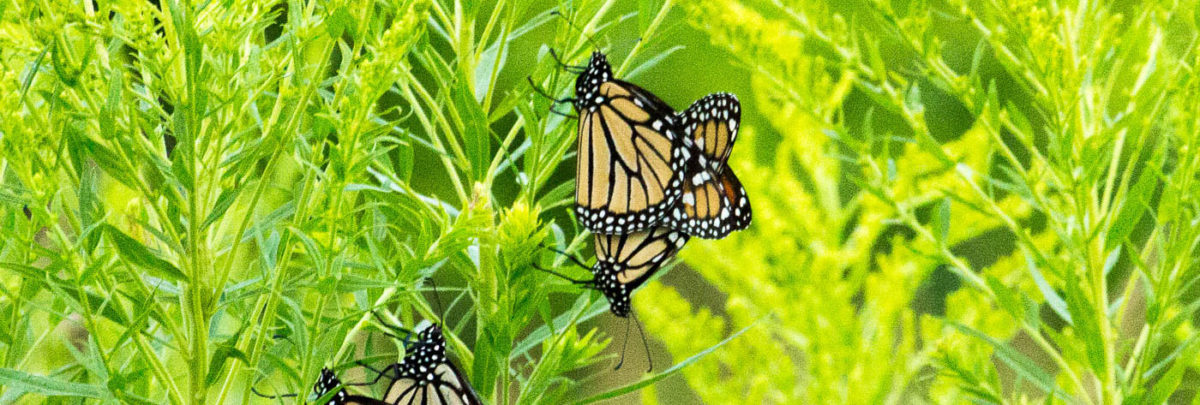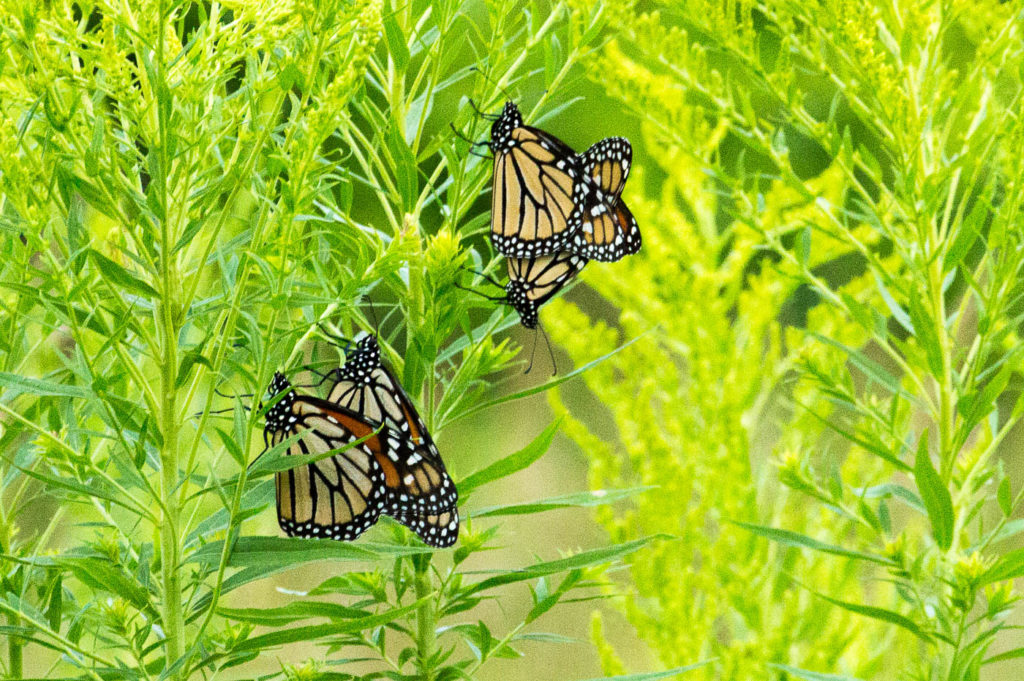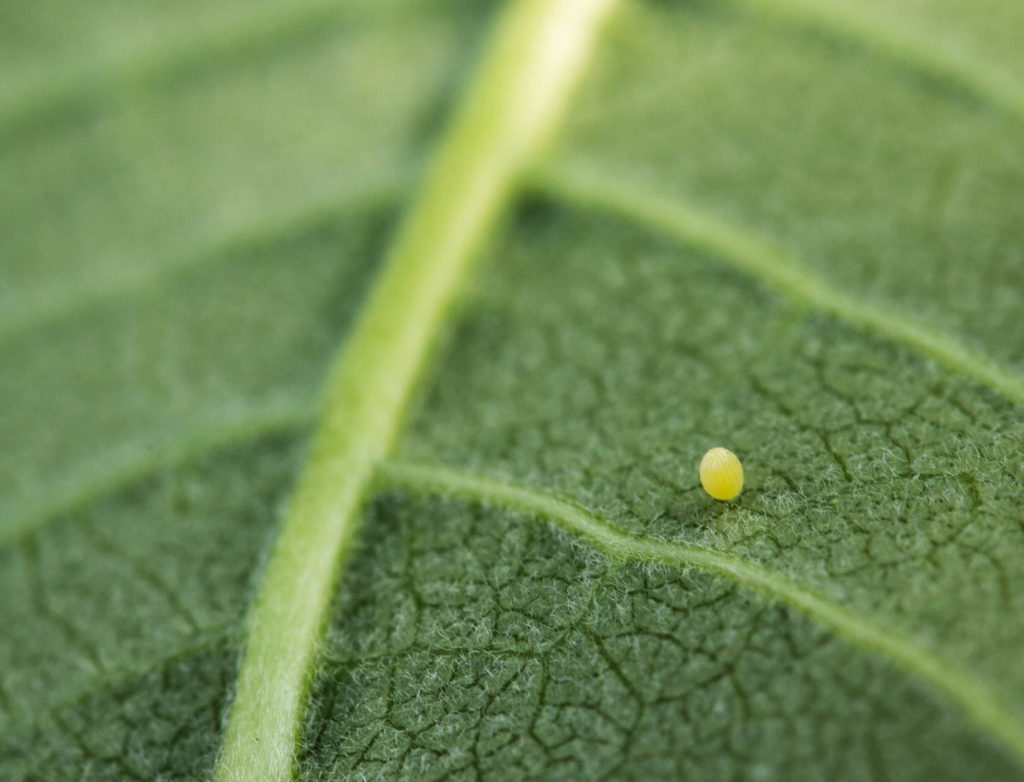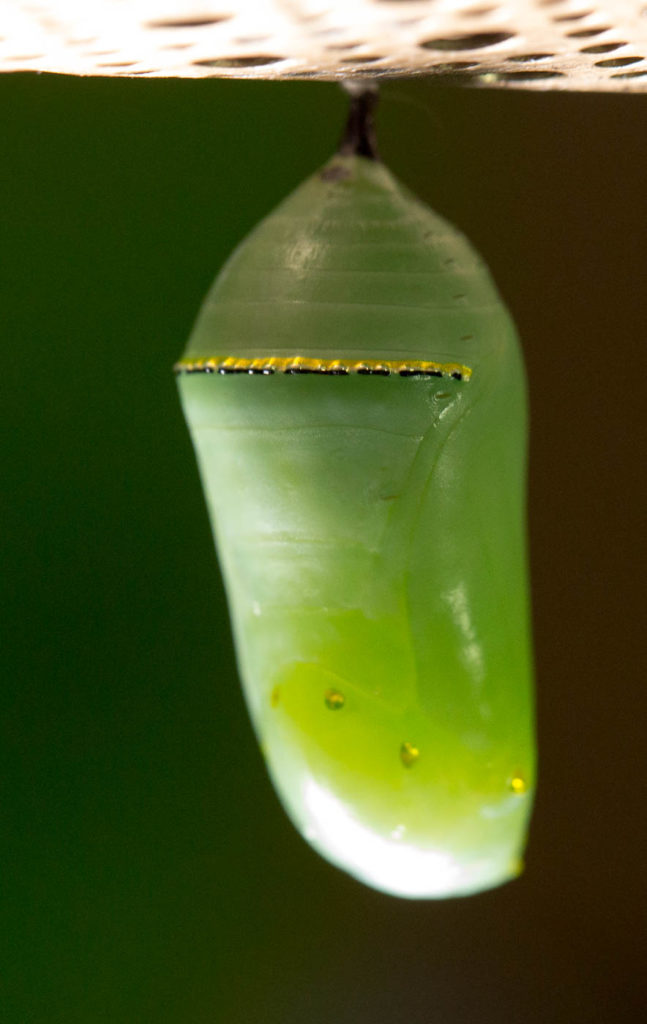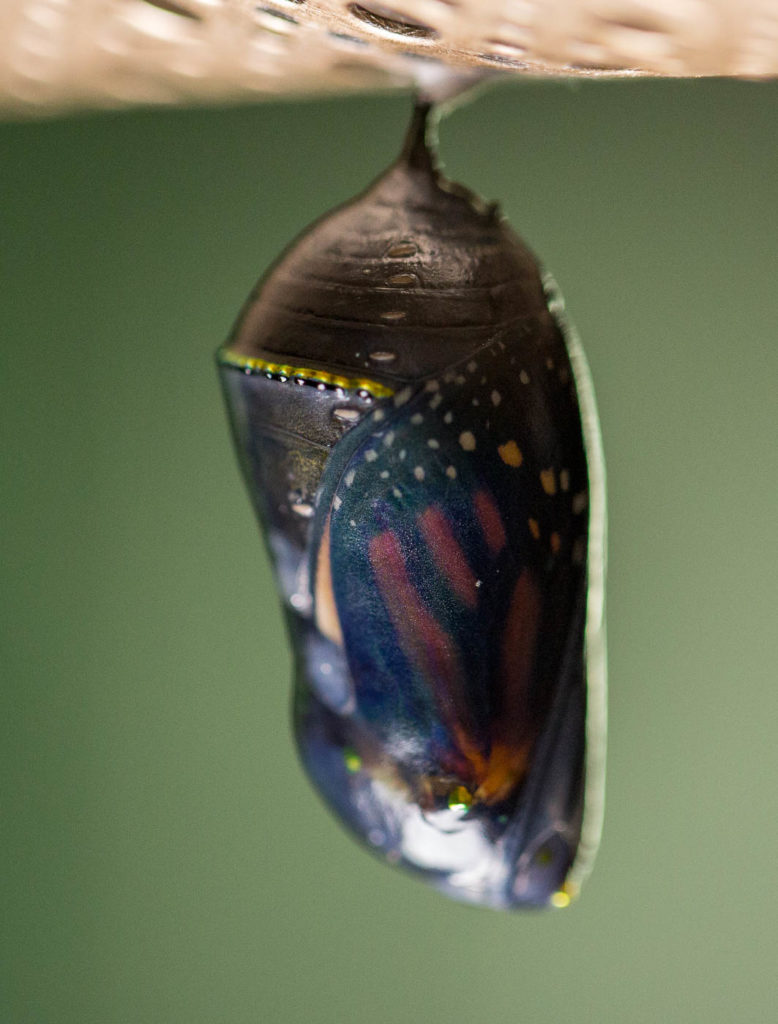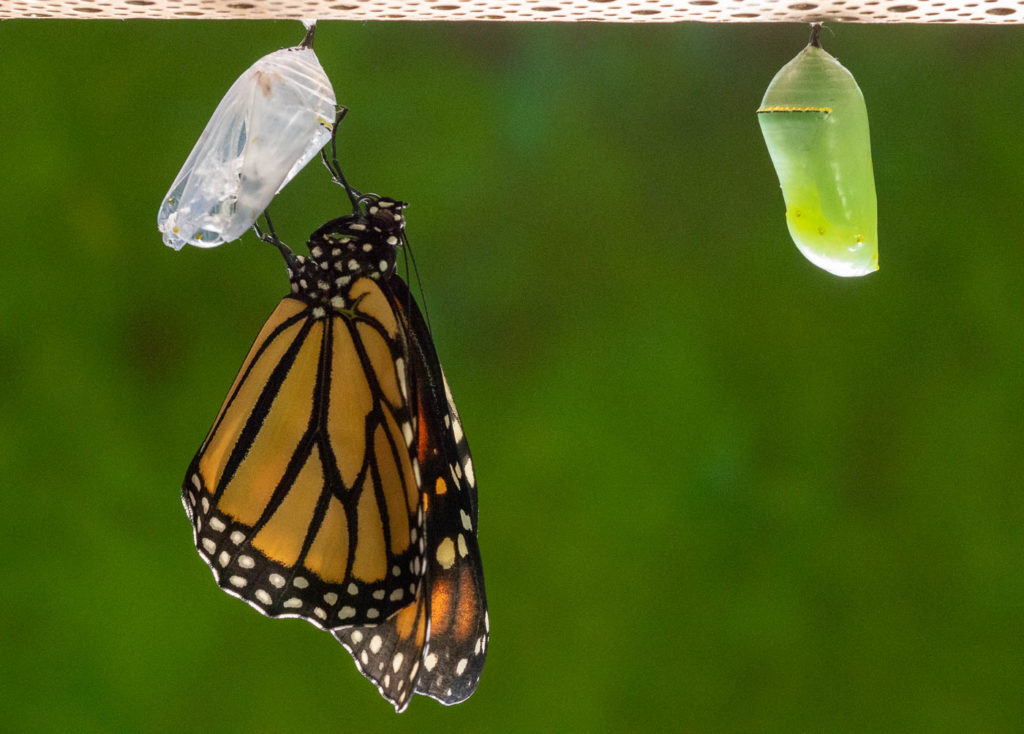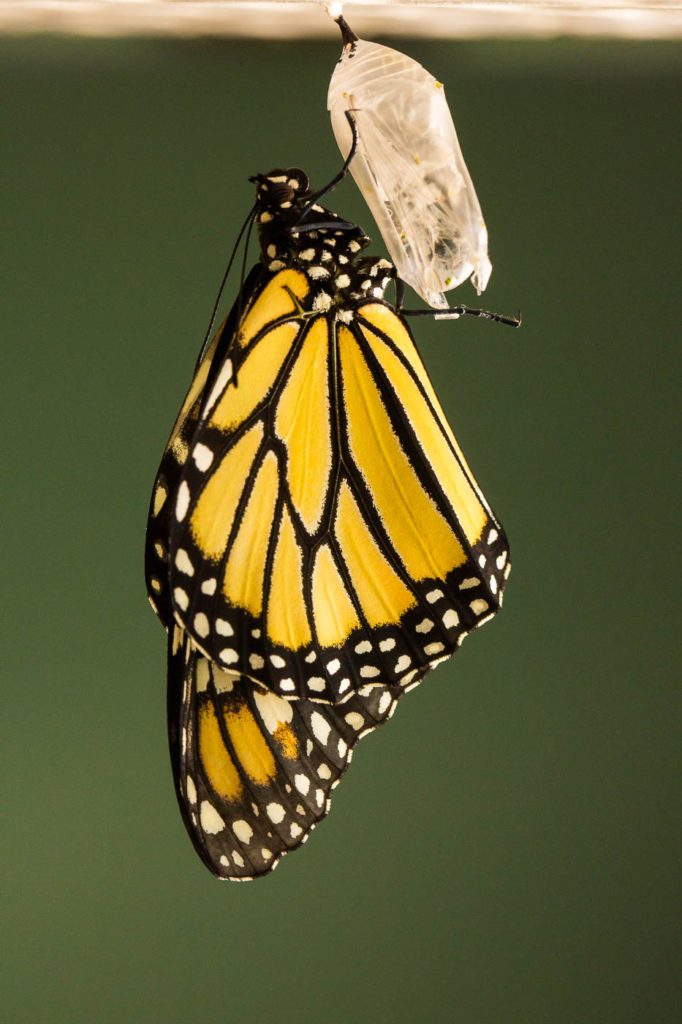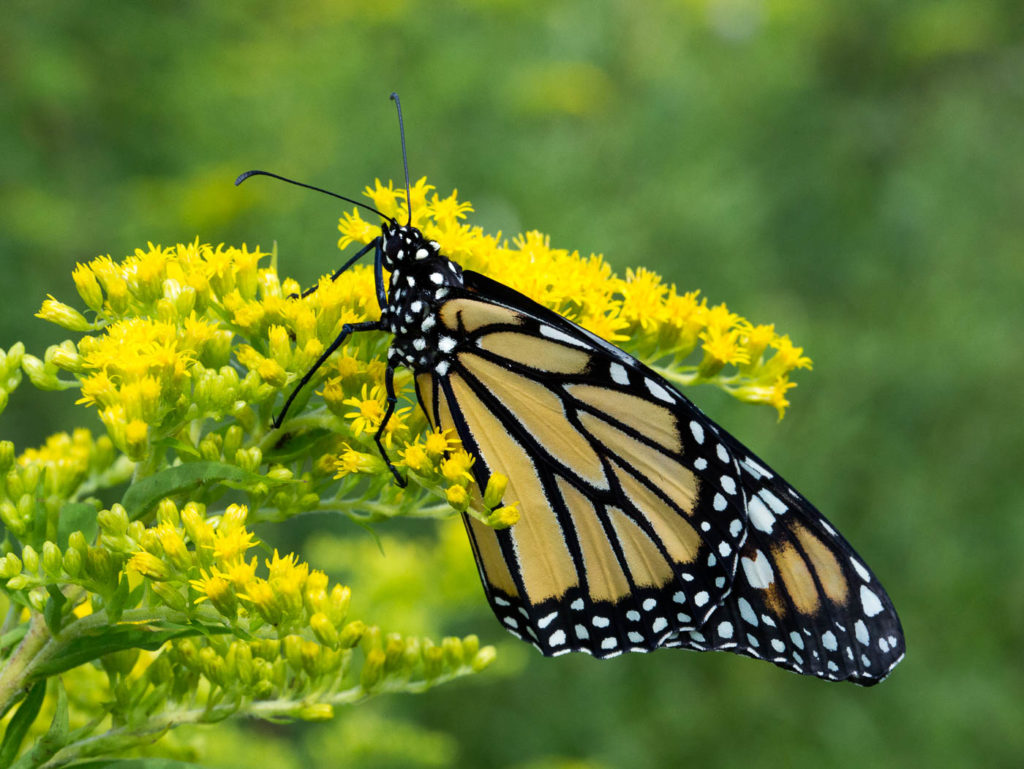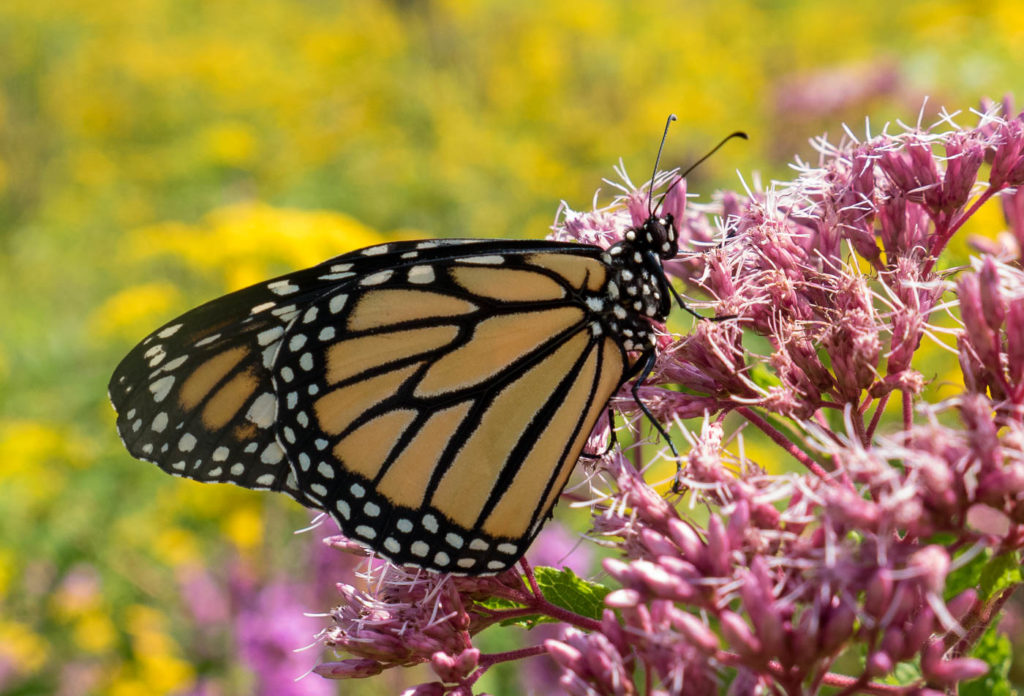Andrea Golden, who lead our iNaturalist Nature Walk gave us her group of monarch eggs to watch over and hatch while she went on vacation.
We watched the teeny eggs hatch out teeny caterpillars, which then went on an eating binge for weeks. Every day we had to go find fresh milkweed leaves and poke them into the little bottles that supply them water.
(Should have taken more photos of tiny caterpillars and the whole nursery, but were distracted by monarch mothering requirements.)
Eventually the worm becomes as big a your pinky, turns itself into a chrysalis, and emerges a few weeks later as a monarch.
There are endless fascinations about this process. For one, the caterpillar emits enzymes inside the green chrysalis, that dissolve it into soup. From that soup, a folded up, mature monarch butterfly takes form.
It emerges limp, but uses a mass of fluid from its abdomen to inflate its wings. After a few hours of drying time it is ready to join the world – and do its part to migrate back towards that one magical mountain in Mexico to which all monarch are drawn.
It is all beyond comprehension, but is a billionth of what nature has devised over the last several hundred million years.
And Mary Cummings Park is a safe habitat for some of nature's creations, such as the monarch. We will continue to plant milkweed for them.

